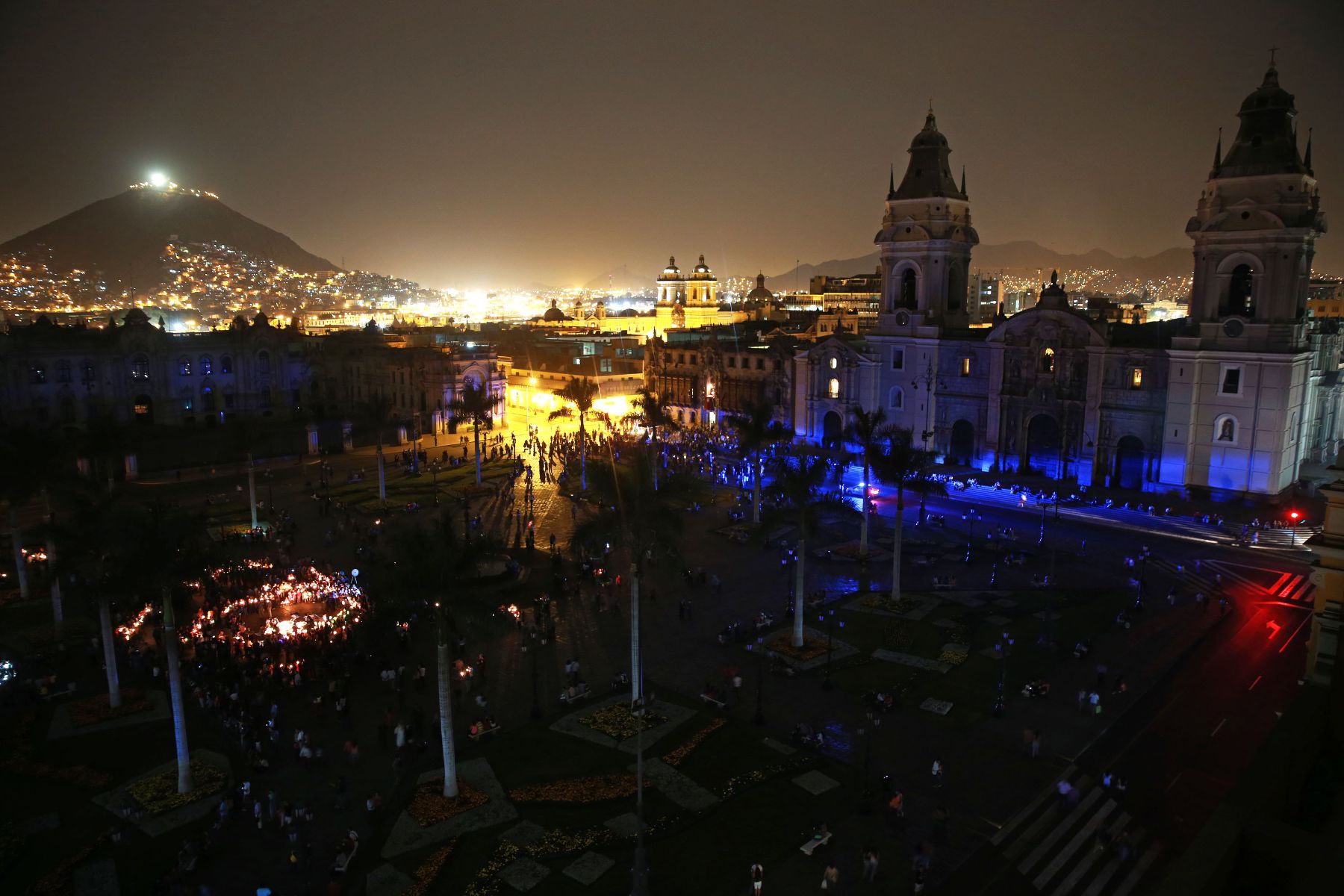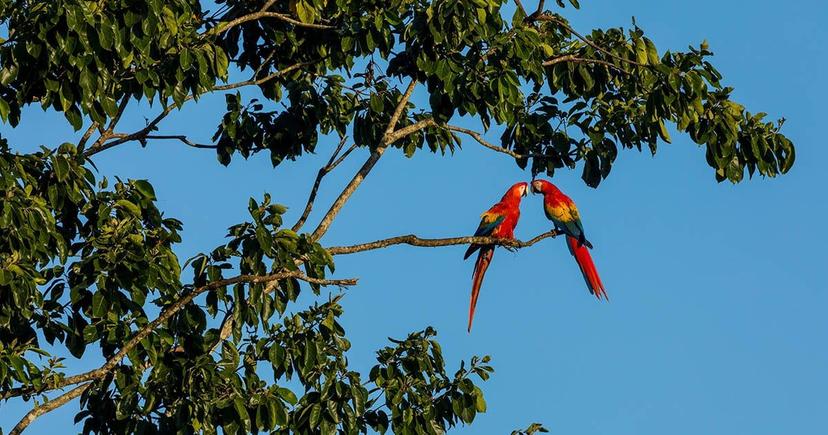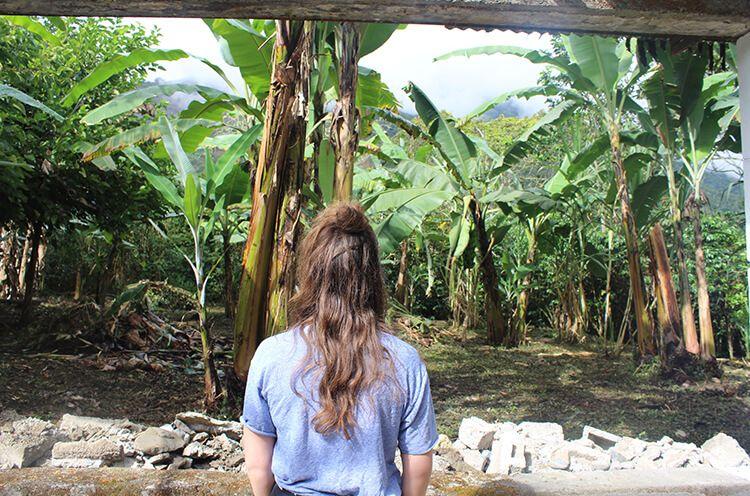
Earth Hour or La Hora del Planeta in Spanish, is fast approaching. It is one of the largest grassroots eco-initiatives in the world, with millions of people across 180 countries participating. Earth Hour Peru is no exception, with 8 million (approx. 25 percent) of Peruvians taking part, making the country one of the most proactive on the planet.
This global event, started by WWF and partners in Sydney Australia in 2007, has become a powerful symbolic event, serving as a catalyst for environmental change at the individual and legislative level.
Earth Hour, sometimes referred to as “turn off the lights day,” is an annual event that calls for individuals and businesses across the globe to voluntarily turn off all unnecessary lights and electronic devices for an entire hour. Most directly, the occasion urges communities to reduce their energy consumption and carbon footprint. Beyond that, the event has been successful in promoting sustainable living while propelling the fight against deforestation, plastic pollution, biodiversity loss, climate change and more.
It all began in Sydney, Australia in 2007 with 2.2 million people. Fast forward to today, Earth Hour engages hundreds of millions of people across 180 countries–with more than two billion showing solidarity with hashtags #earthhour and #connect2earth via social media. Its influence touches all of today’s most critical environmental and conservation issues far beyond the hour.

Earth Hour 2020 will take place on Saturday, March 28 from 8:30-9:30 p.m. local time. During this entire hour, it is asked that governmental authorities turn off lights of official buildings, business owners turn off office lights and bright advertising billboards, and individuals turn off lights and electronics in their homes.
While the majority of Earth Hour 2020 public events have been canceled due to the Coronavirus pandemic, you can still take the opportunity to participate from the comfort of your home.
Earth Hour Peru was initiated in 2009, just two years after the first event. From that moment forward, government officials, businesses, and individuals from Lima to Cusco to Lake Titicaca to the Amazon have participated. In fact, more than 40 cities across 20 districts in Peru have organized activities for the occasion.
Some of the most dramatic showings across Peru have included complete darkness in such iconic places as the Plaza de Armas of Cusco, the Plaza Mayor of Lima, the Plaza de Armas of Arequipa, and even the ancient citadel of Machu Picchu.
Here is a tiny sampling of some other monumental buildings around the world that went “lights out” for past events:

Plaza Mayor of Lima with lights out. Photo by Andina / Carlos Lezama
The central event for Earth Hour Lima 2020, that was scheduled to take place at the Plaza Mayor of the Historic Center of Lima, will be canceled due to the Coronavirus pandemic. This was announced in an official communication from the Municipality of Miraflores on March 11, 2020. Individuals in Lima and throughout Peru are still encouraged to participate from the comfort of their homes and continue to show support with hashtags #EarthHour and #Connect2Earth via social media (#HoraDelPlaneta and #ConectateAlPlaneta in Spanish).
A statement from WWF, given on March 12 says, “we call on everyone to join the movement from their homes, as a preventive measure. It is a time to reflect, and from a symbolic gesture such as turning off the lights, encourage everyone to adopt sustainable changes that will have a great impact. More than ever, the planet needs us healthy and committed to the conservation of nature.”
Lima Tours:
I actually was lucky enough to attend Earth Hour Lima events in 2014 and 2019. In 2014, the then-Environment Minister Manuel Pulgar-Vidal and then-Minister of Culture, Diana Alvarez Calderon, took to the Plaza de Armas of Barranco to celebrate. There was glow-in-the-dark painting, percussion-driven live music, a WWF panda walking around for photos and much more.
Here are some photos of me joining in the eco-fun in 2014 in Barranco:


In 2019, the Plaza Mayor was bursting with exhibitors representing a range of environmental initiatives, plus there was a stage set up for live musical acts, speeches, and words of support from President of Peru Martín Vizcarra.
Here are some photos I took at the 2019 event in Lima’s Historic Center:




WWF Peru started as a temporary project site in 1994, and in 1998 opened its official Peru program office. However, their efforts in Peru go all the way back to 1969, when they contributed to restoring vicuña populations, which were at the time on the verge of extinction. This success was in part due to their support in establishing the first protected area for wildlife management in Peru, the Pampa Galeras National Reserve in Ayacucho. WWF Peru also supported the establishment of other prized natural areas, including Manu National Park, Paracas National Reserve and more.
Today, the organization has initiatives from the Pacific to the Andes to the Amazon. Working with with indigenous and local communities, WWF Peru focuses on conservation and sustainable development. Here are some projects currently underway:

Jaguar resting in a tree. Credit: Advocat / Creative Commons license
We at Peru for Less take responsible travel seriously. Check out our Local Development page to see our initiatives in the areas of conservation, eco-tourism, ethical trekking, alternative tours, and local community partnerships.
To plan your eco-conscious trip to Peru, contact us today.



Email: [email protected]
Sign up to receive our newsletter for great articles, stunning photos, and special deals.